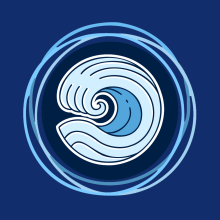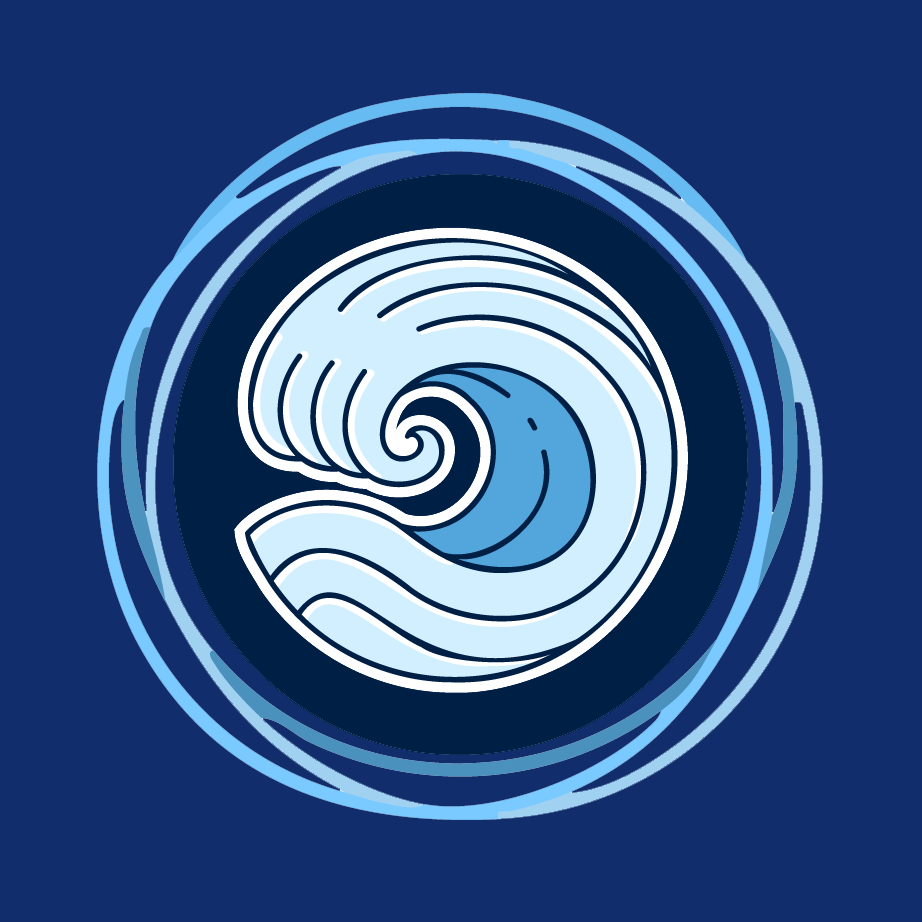
Dear CIS Community,
Something to Ponder
“Climate is what we expect, weather is what we get.” - Mark Twain
This coming weekend and week may involve island, community, and school schedule changes depending on the nature of Storm Melissa’s impact on the Cayman Islands.
Given Storm Melissa’s slow-moving and unpredictable track, this addition of the Director’s Wave is shared in the name of being prepared and to assist with understanding. It is recommended that people have their individual hurricane plans at the ready (including having supplies at the ready). Reports from the authorities on current weather conditions indicate we are likely to see some wind and rain, which could result in flooding in some areas, regardless of the proximity of the storm.
For initial planning purposes, please know that at present, we hopefully anticipate we will have school as normal next week, and at the same time, as is the case with regional storm activity, we may not have a large window of time to adjust should weather patterns change. Thus, for communication, any changes or information will be shared in the following fashion,
- First - via an Official CIS Email
- Second - via an Official posting on the CIS Website
- If feasible - Third - via the Official FSA WhatsApp group
- If feasible - Fourth - via Official CIS social media of Facebook and / or Instagram
From the school readiness perspective, it is important that you are aware of the frequently asked questions regarding storm and hurricane preparedness, conveniently found on our school website -https://www.cis.ky/about-cis/faqs.
We are conscious that given the projected path that schools and other important infrastructures might be impacted next week. Please continue to monitor official government channels for information and make sure you provide yourself with sufficient time to make your storm preparations.
- Cayman Islands Government: https://www.gov.ky/
- Cayman Islands National Weather Service: https://www.weather.gov.ky/
- Hazard Management Cayman Islands: https://www.caymanprepared.gov.ky/news
- Cayman Compass Weather: https://www.caymancompass.com/weather/
- Radio Cayman: https://www.radiocayman.gov.ky/news
- Cayman Prepared / Hazard Management Booklet
Please be reminded that CIS will be in line with recommendations and announcements made by the Ministry of Education and information from Hazard Management Cayman Islands in the event that schools are to be closed due to tropical storm warnings and potential developments into hurricane conditions. Thus, if the government closes government schools, private schools on island, including CIS, will close too.
If you prefer not to click on links for Frequently Asked Questions, following the valediction of this message you can see synopsis of information regarding CIS in relation to storm warnings and the like.
Wishing you a prepared, pleasant, and hopefully dry weekend with comfortable breezes. As the adage goes - in fair weather prepare for foul.
Oh yes, Go Blue Jays!
Sincerely,
Jim
Jim Urquhart
Director - Cayman International School
CIS in Relation to Tropical Storm and Hurricane Warnings FAQ Synopsis from CIS Website
We are currently in the Atlantic Tropical Storm and Hurricane Season. Below are some frequently asked questions to help with understanding with respect to storms, the Cayman Islands, and schools.
Please tell me about CIS actions in relation to hurricane season, including the possibility of school closures.
- Please be reminded that CIS will be in line with recommendations and announcements made by the Ministry of Education and information from Hazard Management Cayman Islands in the event that schools are to be closed due to tropical storm warnings and potential developments into hurricane conditions.
- CIS receives notices from, and is in communication with, the Ministry of Education and Training regarding mandates, direction and guidelines regarding school closures and openings during storm season.
- The above is also in conjunction with their communication with Hazard Management Cayman Islands and the Governor’s Office.
Storms vary in magnitude, timing and direction. Sometimes schools, services and offices etc. are advised to be closed yet a storm changes direction and we end up with just a blustery day.
- Decisions with respect to storms and schools on the Cayman Islands are made with abundance of caution in mind. Hurricane Ivan (September 2004 - Grand Cayman Island) and Hurricane Paloma (November 2008 - Cayman Brac and Little Cayman) remain, and for good reason, deep in the psyche of the Cayman Islands. The more recent Tropical Storm / Hurricane Grace (August 2021) is an example of a seemingly innocuous storm gaining strength and causing considerable damage.
- Indeed it can be frustrating when the direction is that schools are to be closed and a storm passes us by or does not materialize as originally projected by authorities. Thus, creating the scenario of having no school for students on what could amount to merely a blustery day. People who have lived in the Cayman Islands or other storm susceptible regions for an extended period of time have no doubt experienced this.
- It is frustrating for schools to close for sure. Since storm related decisions in the Cayman Islands are made with an abundance of caution in mind, the Cayman Islands and its schools choose to err on safety prudence. The notion is that it is better to have the frustration of a blustery day and no school, than to have school and have flooding, debris, traffic dangers and potential injury because a storm changed direction and schools remain open.
- In the case of CIS over 3500 people have a scheduled interruption in the event of a school closure, informed in advance or otherwise (in the case of emergencies such as an earthquake or fire).
- Of course, when an announcement is made that schools are to be closed and weather changes overnight and a storm passes, the benefits / debates of hindsight can begin. This can certainly happen if an All-Clear announcement is made for the Cayman Islands the morning of a day when schools were announced the previous day to be closed. When this happens the schools and the Ministry of Education weigh in multiple factors, such as;
- The timing of the All-Clear, events scheduled on island, family plans made in light of storm warnings (i.e. child care, work schedules, time with children, clean-up, etc.).
- Availability of staff (i.e. child care issues (particularly, if some schools are open and some are closed).
- Home flooding, transport issues of CIS community.
- Cleaning protocols that may have been interrupted.
- Differences in power outages and other disrupted services around the island
- Many of the above items may still affect people despite an All Clear. Such as conducting a comprehensive review of school infrastructure for function and safety (i.e. clean-up of debris, leaks, power supply, connectivity etc.).
- Thus a decision to remain closed as per prior announcements or to reopen on short notice (if there is good fortune for a storm to pass) is not taken lightly. If there has already been an announcement that schools will be closed, it is unlikely that such a decision will be reversed. In an effort to best balance information, communities’ diverse wishes and certainly people’s safety. CIS is reviewing its processes taking the best account possible in the future event of an early All Clear announcement. Of course noting that when an All Clear announcement is made by the Cayman Islands, they are also managing multiple interests such as, businesses possibly being anxious to open, environmental, utilities and safety authorities possibly preferring to delay an All Clear until risk assessments are thoroughly checked and double checked.
When is hurricane season and what does an average hurricane season look like?
- The Atlantic Hurricane Season is six months and is considered 1 June to 30 November. Please know that storms can form outside of this season on occasion.
- 2020 was the most active year in recorded history for hurricanes in the Atlantic. The trend is that the number of hurricanes each year is increasing and it is anticipated that the 2020’s will be very active.
I am new to the Cayman Islands and hear terms like depression, tropical storm, categories etc. What do these mean?
- Tropical depressions and tropical storms are types of tropical cyclones. A depression has winds up to 38 miles/ hour (61 kilometres / hour). A tropical storm has wind speeds of 39 to 73 miles / hour (62 to 118 kilometres / hour). A tropical depression and a tropical storm have an identified centre.
- These tropical cyclones (depressions and storms) become a hurricane if there are sustained winds of 74 miles / hour (119 kilometres / hour). The categories or rankings of hurricanes on the Saffir-Simpson Scale are as follows,
- Category 1 - 74 to 95 miles / hour (119 to 153 Kilometres / hour).
- Category 2 - 96 to 110 miles / hour (154 to 177 Kilometres / hour).
- Category 3 - 111 to 130 miles / hour (155 to 209 Kilometres / hour).
- Category 4 - 131 to 155 miles / hour (209 to 249 Kilometres / hour).
- Category 5 - 156 miles / hour or greater (250 Kilometres / hour or greater.
- Categories 3, 4 and 5 are considered major or intense hurricanes.
In the Cayman Islands I hear people mention Hurricane Ivan, why are hurricanes named?
- A tropical cyclone is given a name when it becomes a tropical storm (thus tropical depressions are not given names). It is easier to keep track of and remember the name of a storm rather than its positioning by latitude and longitude. Naming storms also helps limit confusion when there is more than one storm or hurricane happening at the same time.
- The names of English, Spanish and French origin. They are given in alphabetical order except the letters Q, U, X, Y and Z.
- Some storm names are retired. This is when a storm caused so much destruction that it would be insensitive or confusing to use the name again. For example, the names Ivan and Paloma are retired.
What are some recommended sources of information regarding storm preparation and management?
- Hazard Management Cayman Islands: http://www.caymanprepared.gov.ky
- Cayman Islands National Weather Service: http://www.weather.gov.ky
- National Hurricane Centre: https://www.nhc.noaa.gov/.
A “Minimum of 925 hours of instruction hours for students of mandatory schooling age in The Cayman Islands is noted - How many instruction hours does CIS generally actually provide to students?
- A CIS student in Middle School or High School typically has about 1,215 hours. This does not include additional studies that happen after school – thus a typical student might have in the vicinity of 1,400 when factoring things like engaging in robotics afterschool, sport, art etc.
- A CIS student in Elementary School has about 1,170 hours with students in Kindergarten generally having about 1,035 hours.
- When considering school hours, a typical CIS student with a typical attendance record has the equivalent of 5 to 40 more days of instruction relative to other schools on island – excluding the time students may engage in afterschool / office hours programming.
Tell My About Remote Learning Related to Short-Term School Closures
In the case of short-term school closures, a switch to remote learning is not automatic. Factors considered first include time for people to further prepare for pending weather (i.e. additional food stores, sandbags, battery packs etc.), connectivity (noting connectivity can vary between different parts of the island), magnitude of weather (noting that even in this recent stint, areas to the south of the school received over 13 inches / 33 cm of rain and areas to the west of school received 6 inches / 15 cm), level of flooding where people live (noting that staff serving in schools on island tend to live in areas more vulnerable to flooding and infrastructure issues), and power.
In the event of inclement weather, CIS may be in a position to offer remote learning opportunities. The priority is student and staff safety, and home preparation - before considering activation of remote learning for short-term closures (being defined as two to three days). Timing of remote learning activation for short term scenarios will vary and will not be immediate. It is recognized that for some, remote learning will be problematic, for some appreciated, for some not enough, for some just right, and for some too much. In the event of a hurricane or tropical storm warning, CIS may or may not be in position to offer remote learning opportunities that will depend on infrastructure, connectivity, magnitude of weather, and safety.
Below is a brief synopsis of what remote learning opportunities may look like if there is a short-term school closure and remote learning is activated.
- Early Childhood
- Email message from school indicating remote learning will be activated.
- A menu of asynchronous learning engagements designed to compliment learning outcomes addressed during normal school days.
- Learning menu provided by EC leadership, with teachers available to clarify questions via email during normal school hours.
- Elementary School
- Email message from school indicating remote learning will be activated.
- Teachers will use Seesaw to reshare with parents links to digital resources and specify a list of available learning activities.
- Middle School
- Email message from school indicating remote learning will be activated.
- Start of day homeroom video check-in - schedule for the day is shared.
- Exact schedules may vary depending on time of closures, nature of weather or other issue.
- Asynchronous learning opportunities with teachers available during scheduled times to answer questions and provide support.
- Synchronous opportunities will depend on the nature of groups and studies at the time.
- High School
- Email message from school indicating remote learning will be activated.
- Start of day homeroom video check-in - schedule for the day is shared.
- Exact schedules may vary depending on time of closures, nature of weather or other issue.
- Asynchronous learning opportunities with teachers available during scheduled times to answer questions and provide support.
- Synchronous opportunities will depend on the nature of groups and studies at the time.

.png?command_1=resize&width_1=430&height_1=430)
.jpg?command_1=resize&width_1=430&height_1=430)





